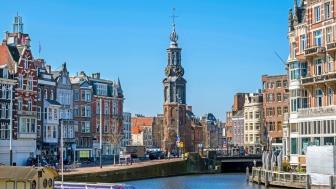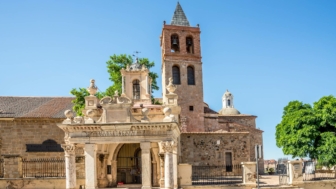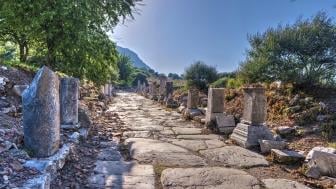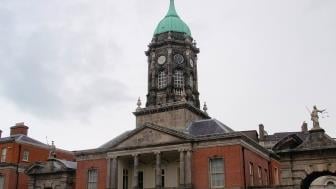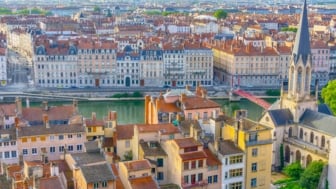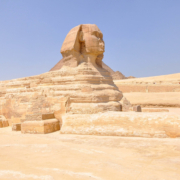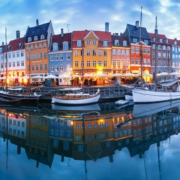From the Vatican’s Museums in Italy to the Ancient Agora of Athens and The Alhambra Palace in Spain, traveling has never been so easy. Take a break from your living room’s view and taking a closer look at ancient buildings, remnants and scenic streets while listening to the captivating stories of world-class landmarks. Here are some interesting facts you’ll learn while taking a Clio Muse Tours’ self-guided virtual experience.
Vatican self-guided virtual experience: The treasures of the Vatican Museums
Home to the most significant artworks of the Renaissance and to a great number of world-famous Roman sculptures, the Vatican Museums never fail to amaze their visitors. Originally founded in the early 16th century by Pope Julius II, the lavish museums feature nowadays over 70,000 artworks and Michelangelo’s masterpiece, Sistine Chapel. No wonder, they’ve ranked as the world’s fourth-most-visited museum, with 6,42,277 visitors entering the museum’s halls in 2017 alone. Discover the ‘The treasures of the Vatican Museums’ in its halls with Clio Muse Tours’ self-guided virtual experience and learn the history of each one of them.

Alhambra Palace self-guided virtual experience: The Last Moorish Kingdom
Perched on top of the Sabika hill, The Alhambra Palace provides panoramic views over the city of Granada. And even though nowadays it’s the perfect viewpoint for travelers visiting the Spanish city, the reason Alhambra was originally built on the hill was to serve as a fortress. Over the centuries, it was renovated and expanded until it was transformed into a royal palace in 1333. The Alhambra Palace not only is a masterpiece of Islamic architecture in the west but also the only surviving palatine city of the Islamic Golden Age. ‘The Alhambra Palace: The Last Moorish Kingdom’ self-guided virtual experience takes you on a tour through the palace’s halls and its outdoor courtyard. From here you can see Granada from above from the comfort of your home.

The Colosseum self-guided virtual experience: Bread and Games
An iconic symbol of Imperial Rome and once the largest amphitheater in the world, The imposing Colosseum in Rome needs no introduction. Stories and tales including gladiators, wild animals and reenactments of famous battles have been sparking visitors’ imagination for several centuries now. The Colosseum Arena is also widely known for hosting popular theatrical plays inspired by Roman mythology. One of the most fascinating performances that took place in the Colosseum was the naumachiae, the staging of mock sea-battles. The arena was flooded with water to allow vessels to float in order to reenact famous naval battles. ‘The Colosseum: Bread and Games’ self-guided virtual experience narrates the whole story of the historic battles and other lesser-known events and facts.

Acropolis Hill: self-guided virtual experience
Home to the most important monuments of Ancient Greece, the Acropolis Hill often occupies the top of ‘must-visit attractions’ lists. Needless to say, that we couldn’t agree more and therefore, a self-guided virtual experience to the place that houses the imposing Parthenon, the Propylaea and The temple of Athena Nike, among others, couldn’t be missing from Clio Muse Tours’ self-guided virtual experiences. With ‘Acropolis Classic’ not only do you get to listen to intriguing information about the Golden Age of Athens but also you get to stand at the Belvedere point and see the sun-drenched Athens from above.

Hagia Sophia: The Wisdom of God
Hagia Sophia’s history is widely known to the public. Initially built to evoke the grandeur of the Byzantine capital Constantinople, the building was eventually conquered in the 15th century by the Ottoman Turks who converted it into a mosque and it later underwent secularization reopening as a museum in 1935. One of the most intriguing legends surrounding the impressive building though is that Justinian was inspired by a wax-church a mysterious bee had built in its bee-hive. How the Eastern Roman emperor discovered the bee’s masterpiece is another story. ‘Hagia Sophia: The Wisdom of God’ self-guided virtual experience narrates every tale and historical fact about Istanbul’s crown jewel, including the one with the mysterious bee.

Rome’s City self-guided virtual experience: Politics and Roman holidays
If we had to choose one city whose squares, streets and buildings bear witness to its past and modern days achievements, then without hesitation, we’d say Rome. Painted with piazzas, fountains and cobblestone alleys, the Italian capital not only is elegant and mesmerizingly beautiful but also brings its history alive in every corner. From the Altra of the Fatherland to Piazza Venezia and Fountain of Trevi, ‘Rome’s City: Politics and Roman holidays‘ virtual experience will guide you through Rome’s elegant streets and attractions.

De Pijp: Factories and the Rise of Working Class
Nowadays, Amsterdam is one of the most beautiful European cities brimming with green areas, parks and charming buildings. However, this hasn’t always been the case. Eager to learn how from a city filled with stench and dirt, the Netherlands’ capital transformed into an eco-friendly hub? Boost your imagination and see the city from a different perspective with ‘De Pijp: Factories and the Rise of Working Class’. This self-guided virtual experience explores the notorious De Pijp district and provides information about the rise of the working class and the 19-century society in the Netherlands. Stops include the Sarphatipark, The House with the Gnomes and the Diamond Factory Asscher.

Athens Ancient Agora self-guided virtual experience: The birth of Democracy
A meeting place for generals, statesmen, philosophers, and poets that have gone down in history as the most influential people of all times, the Ancient Agora in the heart of Athens is an unmissable attraction. Especially, if you’re intrigued to see from up close the place that is considered to be the birthplace of democracy. Every temple, statue, building and museum you’ll find here has its own unique story and ‘Athens Ancient Agora: The birth of Democracy‘ self-guided virtual experience narrates each one of them.

Ephesus self-guided virtual experience: The Ancient Pearl of the Mediterranean
Founded by the Greeks and conquered by the Romans, Ephesus was once a city of proverbial wealth that never ceased to be a bustling port for trade. Over time it became an important center for Christianity; a fact proven by the spectacular ruins of the enormous Church of Mary, the first church to be dedicated to the mother of Christ and the most significant building from the Christian times in Ephesus. In order to get there though, you’ll have to pass by 14 more stops in history’s timeline that ‘Ephesus: the ancient pearl of the Mediterranean’ virtual experience guides you through.

Casanova: A Venetian Tale of Passion
An adventurer with a captivating personality, Casanova remained in history for mastering the art of seducing women and for the numerous lovers he had throughout his life. But who Casanova really was and what’s the real story of the mysterious Venetian author who has been fascinating people since the 18th century? There isn’t a better way to find out than listening to its story from his childhood until the day he left Venice for 20 years of exile while you rummage Venice’s canals and streets with ‘Casanova: A Venetian Tale of Passion‘.
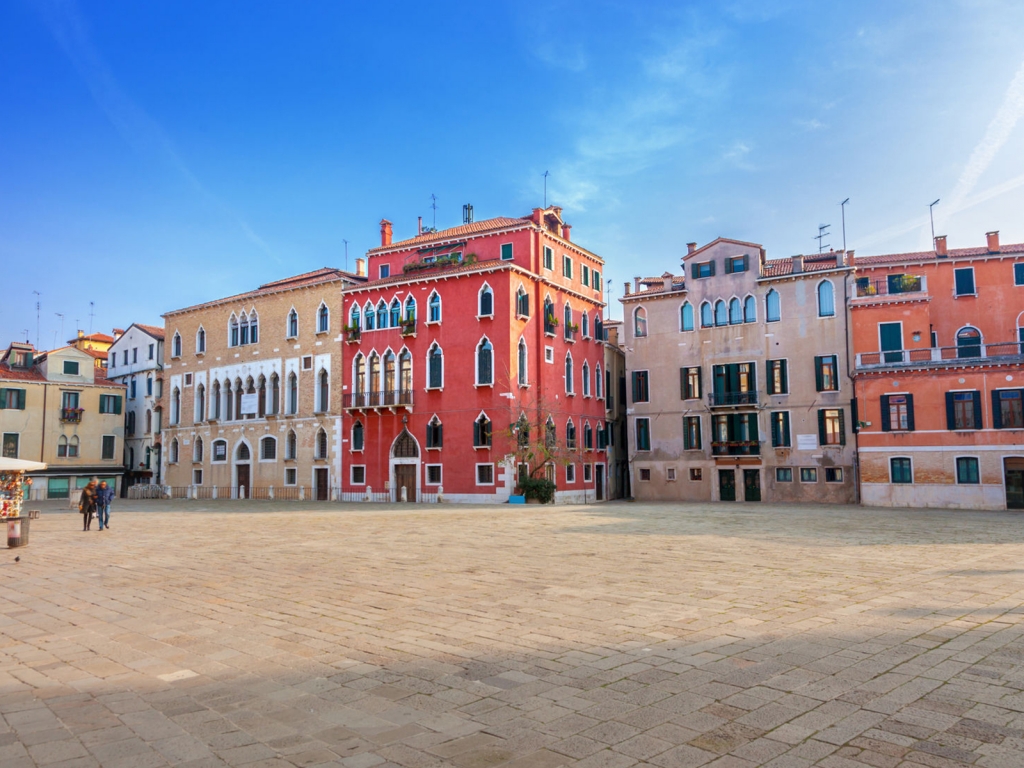
Olympia self-guided virtual experience: the most beautiful place in Greece
The fact that the Olympic Games were born in Greece is common knowledge. But do you know why or how ancient Greeks decided to organize this event every four years in the first place? The first step for learning the history of the world’s most important athletic event is to gain an insight into the values of the ancient Greeks and their health and well-being habits. ‘Olympia: the most beautiful place in Greece’ self-guided virtual experience’ takes this fascinating story from the beginning and along the way unravels lesser-known facts such as the organization of Heraean games, an ancient female running event lost in the mists of time.

Knossos: Daily Life in the Minoan Area
Knossos is the symbol of an entire era. According to the excavations, the site was inhabited from the Neolithic period (7000-3000 BC) until late Antiquity. The city was constructed in different periods but reached its peak during the 16th and 14th centuries. In 1450 BC, the Cretan palaces were destroyed from several causes and there was no recovery. Knossos survived one more century and became the seat of the Mycenaean rulers. Take a walk in sunny Crete with ‘Knossos: Daily Life in the Minoan Area’ and learn the story of one of the world’s most significant civilizations.






















